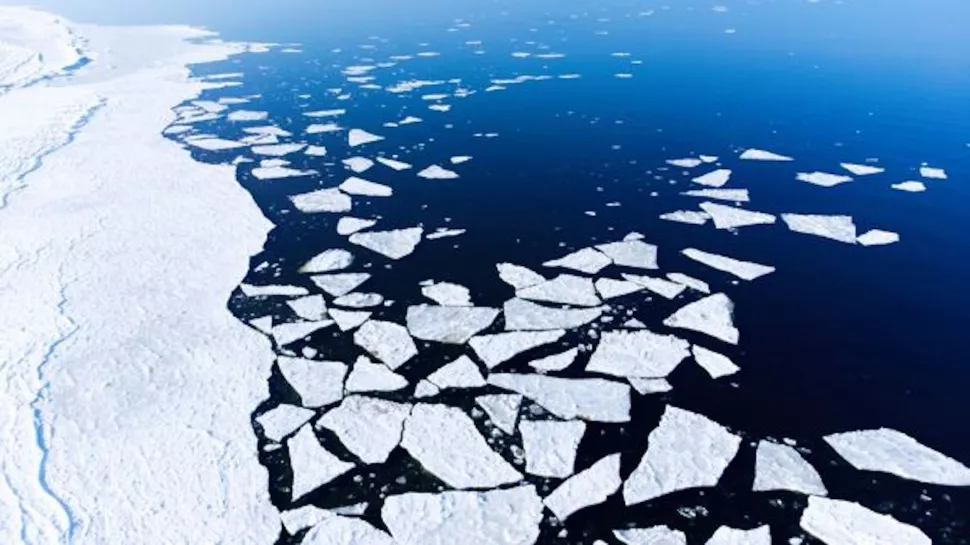Using so-called geoengineering methods, it is theoretically possible to artificially influence and cool the climate. Bern researchers have now investigated whether the melting of the West Antarctic ice sheet can be prevented by artificially “humidifying the sun.” The results show that artificial exposure does not work without decarbonization and carries high risks.
Is there an immediate solution that can stop climate change? Technical methods that affect the climate artificially have been discussed under the name of geoengineering for some time. However, most climate researchers critically evaluate them: high risks, unpredictable consequences for future generations.
In a newly published study in the journal Nature Climate Change Researchers led by Johannes Sutter from the Institute of Physics’ Department of Climate and Environmental Physics (KUP) and the Eschger Center for Climate Research at the University of Bern are investigating whether the melting of ice in West Antarctica can be prevented by artificial means. exposure to solar radiation. Researchers also warn of the unforeseen side effects of geoengineering.
Avoiding a key climate tipping point
“The window of opportunity to limit global temperature rises below 2 degrees Celsius is closing fast, so technical climate change measures are likely to be taken into serious consideration in the future,” says ice modeler Johannes Sutter. Therefore, he says, theoretical models should be used to study the effects and risks of “solar radiation management.” Solar radiation management (SRM) is a term used to describe various methods of blocking solar radiation to make the Earth cooler.
The main reason for the increased interest in geoengineering is to avoid tipping points where the climate can change dramatically and irreversibly. These include the melting of the West Antarctic ice sheet and Greenland, and a corresponding rise in sea level by one meter. “Observations of ice flows in West Antarctica suggest that we are very close to, or have already passed, the so-called tipping point,” explains Johannes Sutter, “so in our study we wanted to find out if it was theoretically possible for the ice sheet to collapse.” can be prevented with the help of solar radiation management”.
artificial solar eclipse
Specifically, Sutter and colleagues investigated what would happen if so-called aerosols — particles suspended in gas — introduced into the stratosphere managed to block solar radiation from the ground — a solar eclipse, so to speak. So far, research has focused on the global implications of solar radiation management (SRM). The Bern study is the first to use an ice model simulation to show what impact such an event would have on the Antarctic ice sheet.
The study examines the possible evolution of the ice sheet under different future scenarios of greenhouse gas emissions and produces different results: if emissions do not stop and SRM occurs in the middle of this century, the West Antarctic Ice Sheet may somehow collapse. delayed but not blocked. In a medium emissions scenario, mid-century SRM could be an “effective tool” to slow or even prevent ice sheet collapse.
According to model calculations, SRM works best when done as early as possible and combined with ambitious climate mitigation measures. But the study’s authors emphasize that “our simulations show that rapid decarbonization is the most effective way to prevent long-term collapse of the West Antarctic Ice Sheet.” If greenhouse gas emissions are “immediately” reduced to net zero, the ice sheet has the best chance of long-term stability.
Possible side effects have not yet been investigated
But how to practically imagine an eclipse? According to Johannes Sutter, an entire fleet of high-flying aircraft would emit millions of tons of aerosols in the stratosphere. However, this technical intervention to the climate will need to be sustained over the centuries. If the intervention is stopped as long as the concentration of greenhouse gases in the atmosphere remains high, the temperature on Earth will rise rapidly by several degrees.
Johannes Sutter points out that the consequences of such a termination shock are only one of the potential dangers posed by SRM. Possible adverse effects are still poorly understood and range from changes in monsoon patterns to changes in ocean and atmospheric circulation. Ocean acidification will continue.
Critics also warn of the political and social ramifications: using methods such as solar eclipses can slow or even prevent climate action. Thomas Stocker, professor of climate and environmental physics at the University of Bern and co-author of the study, said: “Geoengineering will be another global experiment, a potentially dangerous human intervention in the climate system that must be avoided in any case. To Article 2 of the UN Framework Convention on Climate Change”.
Source: Port Altele
